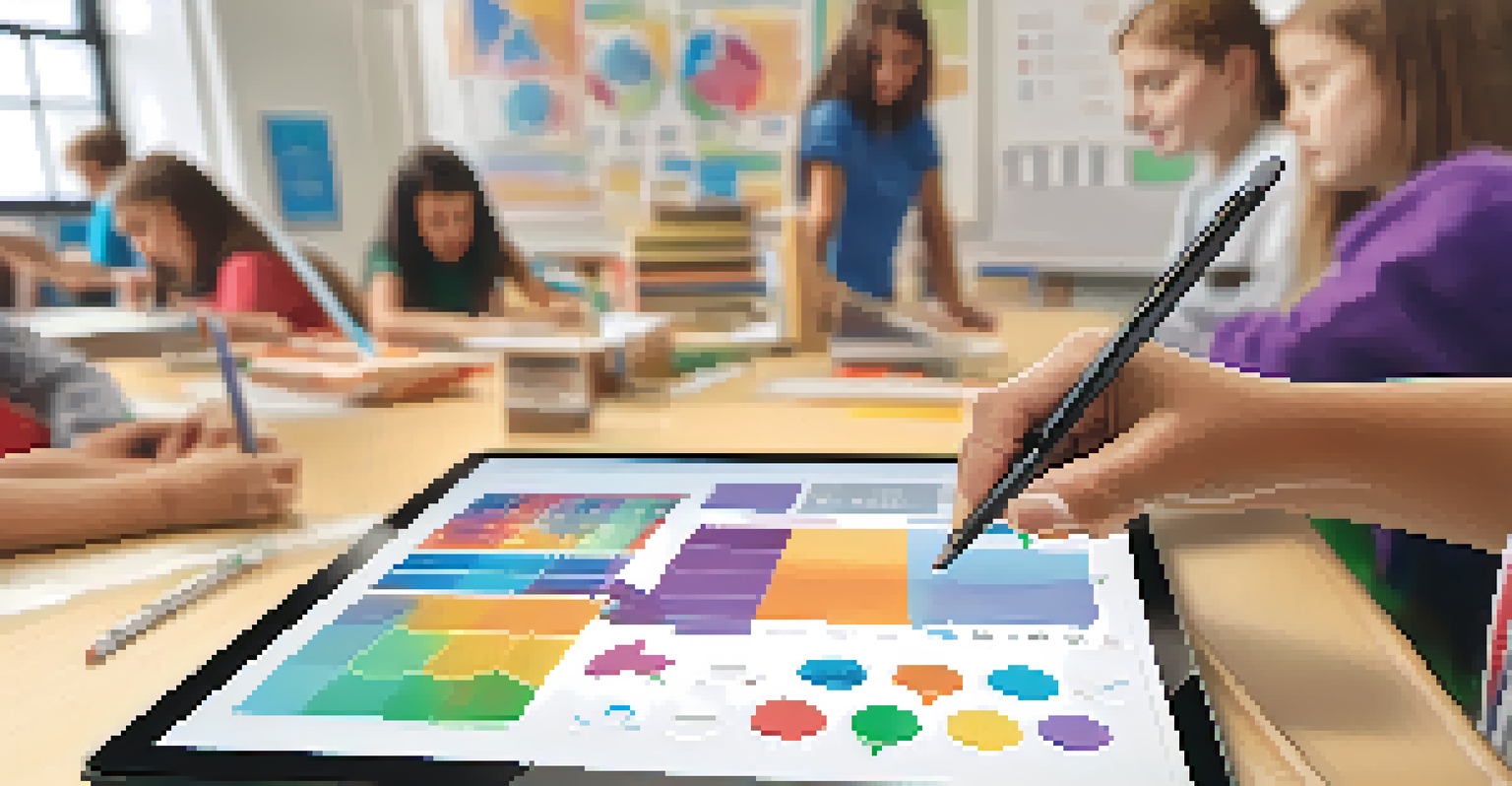The Role of Professional Development in STEM Education for Teachers

Understanding Professional Development in STEM Education
Professional development in STEM education refers to ongoing training and support for teachers to improve their skills and knowledge. This type of development is essential as it equips educators with the latest teaching methods and technologies that can enhance student learning. By staying current in their fields, teachers can foster a more engaging and effective classroom environment that inspires students to explore STEM subjects.
An investment in knowledge pays the best interest.
In the rapidly changing landscape of STEM, ongoing education helps teachers adapt to new curricula and instructional strategies. For example, when new technologies emerge, such as artificial intelligence or robotics, professional development ensures that teachers can integrate these into their lessons effectively. This adaptability not only benefits teachers but also prepares students for future careers in these fields.
Overall, understanding the importance of professional development in STEM education is crucial for both teachers and students. It serves as a foundation for continuous improvement, ensuring that educators are not just teaching but are also inspiring the next generation of innovators.
Benefits of Professional Development for Teachers
Professional development offers numerous benefits that directly impact teachers’ effectiveness in the classroom. One of the most significant advantages is the increased confidence teachers gain from mastering new skills and concepts. When educators feel competent in their knowledge, they are more likely to engage their students and create a positive learning atmosphere.

Moreover, professional development fosters collaboration among teachers, allowing them to share best practices and resources. This sense of community can lead to innovative ideas and teaching strategies that improve student outcomes. For instance, teachers who collaborate on STEM projects can share insights about hands-on learning activities that spark student interest.
Importance of Ongoing Training
Professional development equips teachers with the latest skills and methodologies, enhancing their effectiveness in the classroom.
Additionally, ongoing professional development can lead to career advancement opportunities for teachers. By continuously upgrading their skills, educators can position themselves for leadership roles or specialized positions within their schools or districts, ultimately benefiting their students even further.
Key Components of Effective Professional Development
Effective professional development should be relevant, engaging, and tailored to the specific needs of teachers. A one-size-fits-all approach rarely works in education; instead, programs should focus on practical applications that teachers can implement in their classrooms. Workshops that offer hands-on experience, for example, tend to be more impactful than purely lecture-based sessions.
Education is not the filling of a pail, but the lighting of a fire.
Moreover, successful professional development often includes ongoing support and follow-up. This could mean providing resources, mentorship, or opportunities for teachers to observe each other in action. Such continued engagement helps reinforce what has been learned and allows educators to refine their techniques over time.
Lastly, effective professional development must be data-driven. By assessing the impact of training on student learning outcomes, schools can ensure that their investments in teacher development are yielding positive results. This cycle of evaluation and improvement ultimately benefits both teachers and students.
The Role of Technology in Professional Development
Technology plays a pivotal role in enhancing professional development for teachers in STEM fields. Online courses and webinars have made it easier for educators to access training from anywhere, allowing for more flexibility in their busy schedules. This accessibility means teachers can learn at their own pace, which can lead to deeper understanding and retention of new concepts.
Moreover, technology can facilitate collaborative learning experiences through virtual platforms. Teachers can connect with peers across the globe, sharing insights and strategies that enrich their professional growth. This global perspective often brings new ideas and practices that can be adapted to local classrooms.
Collaboration Enhances Learning
Engaging in professional development fosters collaboration among teachers, leading to innovative teaching strategies that improve student outcomes.
Additionally, technology can provide teachers with valuable resources and tools for their own classrooms. From simulation software to interactive apps, educators can explore various technological applications that engage students in STEM learning. By integrating these tools, teachers can enhance their teaching methods and make learning more interactive and enjoyable.
Challenges in Implementing Professional Development
Despite the clear benefits, there are challenges in implementing effective professional development programs. One issue is often the funding and resources available to schools, which can limit the quality and quantity of training offered. Without adequate support, professional development initiatives may fall short, leaving teachers without the tools they need to succeed.
Another challenge is time constraints. Teachers are already stretched thin with their responsibilities, and finding time for professional development can be difficult. Schools must prioritize professional development as part of their culture, ensuring that teachers have dedicated time to engage in learning without feeling overwhelmed.
Finally, varying levels of teacher experience and comfort with technology can create barriers to effective professional development. Programs must be designed to cater to a range of skill levels, ensuring that all educators can benefit, regardless of their starting point. Addressing these challenges is crucial for building a robust professional development framework.
The Impact of Professional Development on Student Learning
When teachers engage in professional development, the effects often ripple out to their students. Research consistently shows that well-trained educators are more effective in delivering content and engaging students. This means that when teachers improve their skills through professional development, their students are more likely to perform better academically.
For example, teachers who have participated in STEM-focused training are often able to create more dynamic and interactive lessons. They might incorporate projects that require critical thinking or collaboration, which can deepen students’ understanding of complex concepts. This hands-on approach can ignite a passion for STEM subjects, leading to increased interest and enrollment in these fields.
Technology Transforms Professional Growth
Utilizing technology in professional development provides flexible learning opportunities and valuable resources that enrich teachers' instructional practices.
Ultimately, the goal of professional development is to enhance the learning experience for students. By investing in teachers, schools are investing in their students’ futures, equipping them with the knowledge and skills needed to thrive in an increasingly technology-driven world.
Future Directions for Professional Development in STEM Education
Looking ahead, the future of professional development in STEM education seems promising, with a focus on innovation and adaptability. As technology continues to evolve, professional development programs will need to incorporate new tools and methodologies that reflect these changes. This might include integrating virtual reality experiences or coding boot camps into training sessions.
Additionally, there is a growing emphasis on personalized learning for teachers. Just as educators strive to meet the diverse needs of their students, professional development should also be tailored to individual teachers’ strengths and areas for growth. This personalized approach could lead to more effective training and ultimately better outcomes for students.

Finally, collaboration between educational institutions and industry will be crucial in shaping future professional development. By partnering with organizations that specialize in STEM fields, schools can ensure that their training is relevant and aligned with the skills needed in the workforce. This collaboration can create a more seamless transition for students from education to careers in STEM.